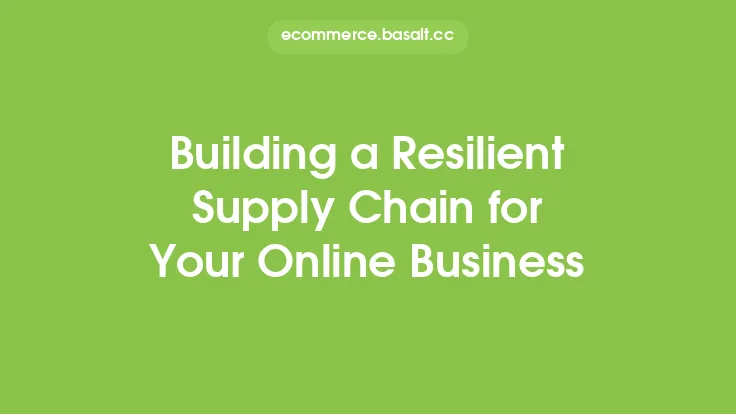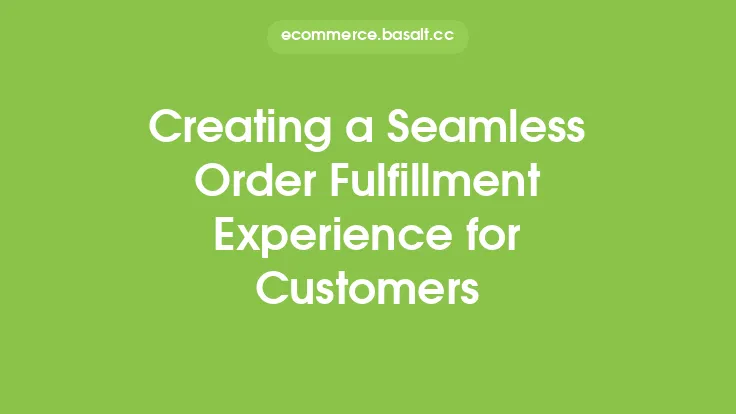As an e-commerce business grows, its store infrastructure must be able to scale to meet increasing demand. A scalable store infrastructure is essential for providing a seamless shopping experience, handling high traffic, and supporting business expansion. In this article, we will explore the key components of a scalable store infrastructure and provide guidance on how to build one for long-term growth.
Understanding Scalability
Scalability refers to the ability of a system to handle increased load and traffic without compromising performance. In the context of e-commerce, scalability is critical for ensuring that the online store can handle a growing number of customers, orders, and transactions. A scalable store infrastructure should be able to adapt to changing business needs, handle peak traffic periods, and provide a consistent user experience.
Key Components of a Scalable Store Infrastructure
A scalable store infrastructure consists of several key components, including:
- Server infrastructure: A robust server infrastructure is essential for handling high traffic and providing fast page loads. This can include load balancers, web servers, application servers, and database servers.
- Database management: A scalable database management system is critical for handling large amounts of data and providing fast query performance. This can include relational databases, NoSQL databases, or a combination of both.
- Content delivery network (CDN): A CDN is a network of distributed servers that can cache and serve content, reducing the load on the origin server and improving page load times.
- E-commerce platform: A scalable e-commerce platform is essential for providing a flexible and customizable foundation for the online store. This can include platforms such as Magento, Shopify, or WooCommerce.
- Payment gateway: A scalable payment gateway is critical for handling high volumes of transactions and providing a secure payment processing experience.
Designing a Scalable Store Infrastructure
Designing a scalable store infrastructure requires careful planning and consideration of several factors, including:
- Traffic projections: Estimate the expected traffic and sales growth over the next 6-12 months to determine the required infrastructure capacity.
- Server resources: Calculate the required server resources, including CPU, memory, and storage, to handle the expected traffic and sales growth.
- Database performance: Optimize database performance by indexing tables, optimizing queries, and using caching mechanisms.
- Content delivery: Use a CDN to cache and serve content, reducing the load on the origin server and improving page load times.
- Security: Implement robust security measures, including SSL encryption, firewalls, and access controls, to protect customer data and prevent unauthorized access.
Building a Scalable Store Infrastructure
Building a scalable store infrastructure requires a combination of technical expertise, strategic planning, and ongoing maintenance. Here are some steps to follow:
- Assess current infrastructure: Evaluate the current infrastructure and identify areas for improvement.
- Develop a scalability plan: Create a scalability plan that outlines the required infrastructure upgrades and improvements.
- Implement load balancing: Implement load balancing to distribute traffic across multiple servers and improve responsiveness.
- Use cloud services: Consider using cloud services, such as Amazon Web Services (AWS) or Microsoft Azure, to provide scalable infrastructure and reduce costs.
- Monitor performance: Monitor performance regularly and make adjustments as needed to ensure optimal performance.
Best Practices for Maintaining a Scalable Store Infrastructure
Maintaining a scalable store infrastructure requires ongoing monitoring, maintenance, and optimization. Here are some best practices to follow:
- Monitor traffic and sales: Monitor traffic and sales regularly to anticipate and prepare for peak periods.
- Optimize database performance: Optimize database performance regularly to ensure fast query performance and data retrieval.
- Update software and plugins: Update software and plugins regularly to ensure compatibility and security.
- Test and iterate: Test and iterate regularly to identify areas for improvement and optimize performance.
- Provide training and support: Provide training and support to staff and developers to ensure they have the skills and knowledge needed to maintain and optimize the infrastructure.
Conclusion
Building a scalable store infrastructure is critical for e-commerce businesses that want to grow and expand their online presence. By understanding the key components of a scalable store infrastructure, designing and building a scalable infrastructure, and following best practices for maintenance and optimization, businesses can provide a seamless shopping experience, handle high traffic, and support long-term growth. Remember, scalability is an ongoing process that requires continuous monitoring, maintenance, and optimization to ensure optimal performance and support business growth.





